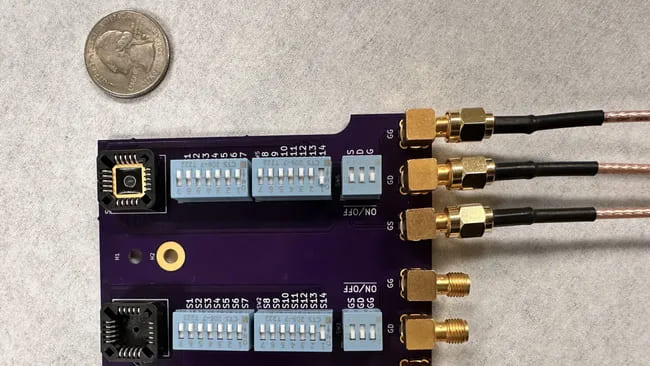Electronic Tongue? Yes, Researchers have developed an innovative system powered by artificial intelligence (AI) that can effectively identify issues related to food safety and freshness. This breakthrough was reported on October 9 in the journal Nature.
“We’re trying to make an artificial tongue, but the process of how we experience different foods involves more than just the tongue,” said study co-author Saptarshi Das, an engineer at Penn State University, in a statement. “We have the tongue itself, consisting of taste receptors that interact with food species and send their information to the gustatory cortex — a biological neural network.”
The electronic tongue operates using an ion-sensitive field-effect transistor (ISFET), a device specifically designed to detect chemical ions. This sensor gathers data about the ions present in a liquid and converts this information into an electrical signal that can be processed by a computer.
How does the ‘electronic tongue’ function?
In this system, the sensor functions as the tongue, while artificial intelligence (AI) acts as the gustatory cortex, which is the brain region responsible for taste perception. The AI processes and interprets the data collected by the sensor, mimicking how the human brain analyzes taste information.
Initially, researchers provided the AI with specific parameters to assess the acidity of liquids, achieving an accuracy of approximately 91%. When allowed to define its parameters, the AI’s accuracy improved to over 95%. The electronic tongue has been tested on various beverages and can distinguish between similar drinks, assess dilution levels in milk, identify spoiled fruit juice, and detect harmful substances like per- and poly-fluoroalkyl substances (PFAS) in water.

The system’s robustness is enhanced by its ability to account for variations that can affect sensor reliability. This capability allows for more reliable assessments of food quality and safety, demonstrating how AI can effectively replicate complex sensory processes akin to human taste perception.
Using a method called Shapley Additive Explanations, researchers could analyze which parameters were most significant in the neural network’s decision-making process. This approach aids in understanding how neural networks arrive at their conclusions—a critical area of inquiry in AI research. Das noted that the network identified subtle characteristics in data that humans often struggle to define accurately. By considering sensor characteristics holistically, the neural network mitigates daily variations that can affect ion-sensitive field-effect transistors’ reliability.
The ability to adjust for these variations enhances the robustness of the sensor for various applications. Das remarked on nature’s inherent imperfections, stating, “We figured out that we can live with imperfection… just like our electronic tongue.” This development holds promise for advancing food safety measures by providing more reliable assessments of food quality and safety.
According to Das, the “electronic tongue” is limited only by the data it is trained on, meaning its application could extend beyond food assessment to areas like medical diagnostics. Its sensitivity and robust design make it suitable for deployment across various industries, enhancing its potential for widespread use.
In conclusion, the development of the AI-powered electronic tongue marks a significant advancement in food safety technology. By utilizing an ion-sensitive field-effect transistor to detect chemical ions and translating this data into actionable insights through artificial intelligence, the system effectively mimics human taste perception. Its ability to accurately assess the freshness of various beverages and identify potential spoilage or contamination demonstrates its practical applications in ensuring food safety.
As this technology continues to evolve, it holds the potential to enhance food quality assessments, providing consumers and producers alike with a reliable tool for maintaining food safety standards. The integration of AI in sensory analysis not only improves accuracy but also offers a deeper understanding complex profiles, paving the way for innovations in food science and safety.


